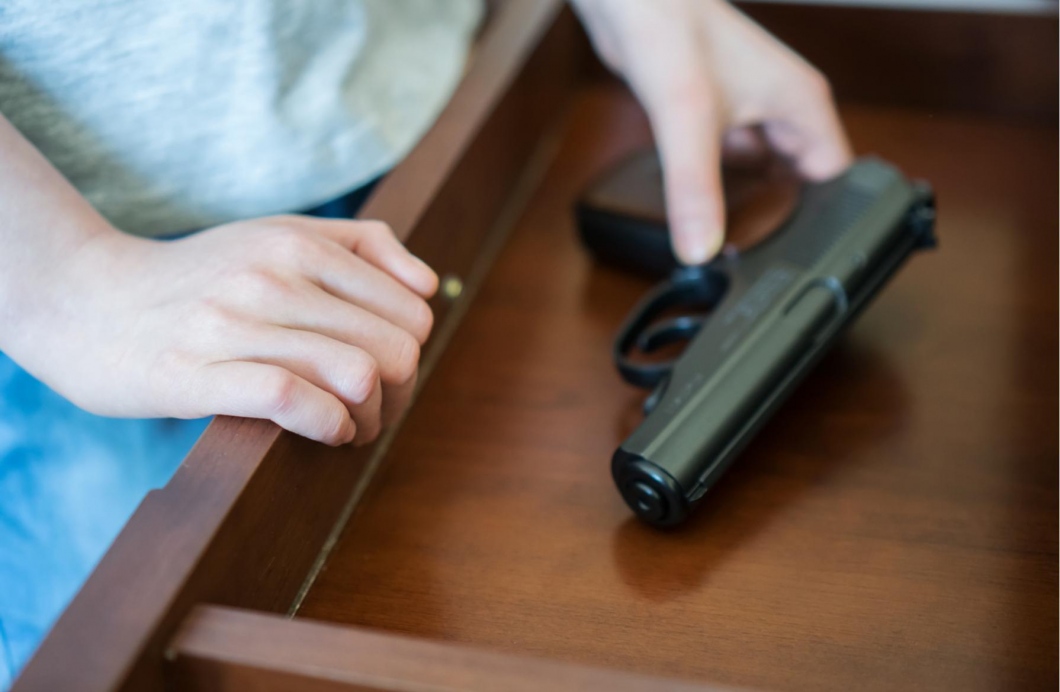No matter what side of the gun debate you are on, a gun in a home is a dangerous situation. Guns increase the risk for suicides, accidents, and homicides. In fact, guns are involved in more than 75% of the murders that occur in the United States every year. For this reason, it’s important to know basic facts about how to store guns safely if you do have them at home. Here are some helpful safety tips to keep your family safe from accidental shots or injuries from people who shouldn’t have access to guns. Understanding correct firearm safety is crucial if you plan on or currently do have a gun in your home.
Where to Keep Guns
Guns can be kept in homes. If you do keep guns in your home, it is important to keep them out of reach of unauthorized users. Children and teenagers are most likely to find guns within their own home. For this reason, they should be stored safely.
One popular method of safe storage is using a gun lock like a cable lock or trigger lock. These safety locks are available at many sporting goods stores for around $5-$10 per lock. This inexpensive safety measure will protect your children from finding an easily accessible gun that can cause accidental injury or death.
It’s also important to store your ammunition separately from your firearm. Ammunition should be stored in an area where it cannot be accessed by children, pets, or anyone not authorized to have access to the gun on site.
You might want to consider keeping your gun safe in a place that your children don’t know about. You could keep it hidden in the back of your closet, or in a forgotten corner of your cold storage room in the basement. No matter where you put it, make sure it is locked away.
How to Store Guns Safely
When you keep guns in your home, it’s important to store them properly for safety. The most basic rule is to keep the gun unloaded and locked away separately from its ammunition. If you’re storing the gun loaded, make sure that the chamber is empty and that the gun is securely locked where no one else can access it.
Also remember that children should never be able to access your weapons. “Children” and “guns” tell you how dangerous that combination can be. Put your guns in a gun safe or lockbox where they cannot be accessed by young children or other people who should not have access to them. You can buy a gun safe in a variety of sizes and with many different locking methods, including keys, numeric combinations, and fingerprint or other biometric scans. The more difficult it is to open the safe, the better. Ideally, a safe should also be fire rated to withstand a high-temperature fire so that, in the event of a fire, the gun and/or ammunition will not get hot and go off. This protects your family, your neighbors, and first responders.
Where Not to Keep Guns
Unless you are actively interacting with the gun (cleaning it, firing it, etc.), you should never leave a gun sitting on a counter, bedside table, coffee table, dining room table, or any other area of the home where children can access it.
Sometimes when you’re in a hurry or plan to “come right back” and continue cleaning or otherwise interacting with the gun, you may be tempted to put it on a high shelf or in a high cabinet. While this may be safer than sitting openly on a table, it’s still dangerous. Children can climb and often get curious – especially if they see you put the gun up there. No matter what, never store your gun outside of a safe. You never know what could happen and part of being a responsible gun owner means keeping it locked away and out of sight.
What Not to Do With a Gun
One of the biggest mistakes people make is leaving a loaded gun sitting on a table or in an easy to grab spot. Guns should always be stored in a locked drawer or safe. It’s important to teach kids never to touch any guns and to tell an adult if they find one. It’s also crucial to teach them to tell friends to leave guns alone if they find one.
You should also never aim a gun at anyone, even as a joke. Not only is this dangerous, but it teaches children that it’s okay to do this.
Finally, do not paint children’s toy guns to look more like real guns. Toy guns are brightly colored on purpose to distinguish them from real guns. It’s important to ensure your children know this and can make this distinction. Make sure your children always know that guns are dangerous and they are never allowed to pick it up, even if it isn’t loaded. It’s always better to be safe than sorry.
We hope you found these tips helpful. It’s important to do thorough research and educate yourself on the choices available before having a firearm in the home with children. There are plenty of safe storage options out there to ensure that you’ll be able to find something that meets your needs.

